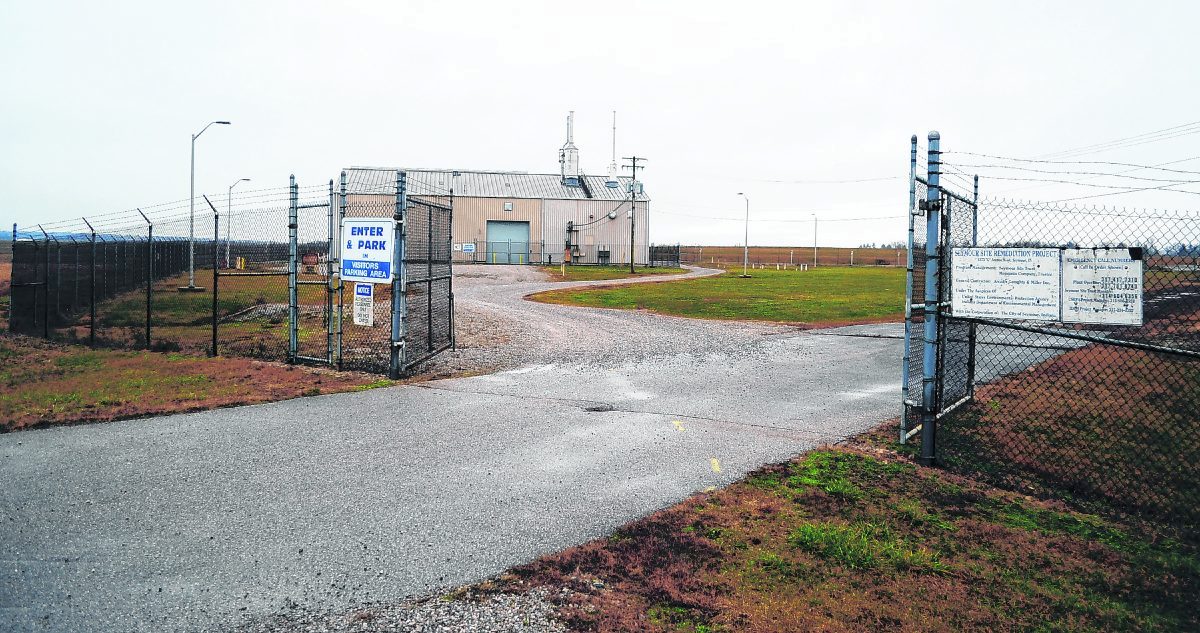
A site that once served as of one of the country’s largest toxic waste dumps in the nation could become a location for renewable energy.
The Seymour Municipal Airport Authority has been in talks with companies interested in bringing solar energy to Freeman Municipal Airport.
In the northwest corner of the airport is a plot of land that’s unused by the authority and city.
[sc:text-divider text-divider-title=”Story continues below gallery” ]Click here to purchase photos from this gallery
The land was formerly occupied by Seymour Recycling Corp., which is one of the first superfund sites in U.S. history.
Seymour Recycling Corp., a subsidiary of Seymour Manufacturing Co., was created in 1970 for recycling and disposal of industrial and hazardous waste.
In 1978, the Indiana Stream Pollution Control Board, predecessor of the Indiana Department of Environmental Management, petitioned Jackson Circuit Court for an injunction to prevent the acquisition of additional hazardous material by the company.
Judge Robert R. Brown issued an order, appointed a receiver for the company and effectively caused the cessation of its business operation.
The site was named a National Priorities List superfund site by the Environmental Protection Agency in 1980 after an investigation at the site found massive contamination in the groundwater.
They also discovered many of the tanks were leaking, causing soil and groundwater contamination, vapor emissions, explosions, fires and odor problems.
Between 1982 and 1984, the EPA completed a major surface cleanup of more than 60,000 55-gallon drums of hazardous waste and 98 storage tanks and removal of the impacted soil.
In 1988, the U.S. District Court for the Southern District of Indiana lodged a consent decree authorizing the comprehensive and final cleanup of the site.
The decree had a settlement between EPA, the state, the city of Seymour, Seymour Manufacturing Co. and the approximately 140 other companies and organizations for remedial action at the site.
The decree outlined provisions for a final remedial action plan and for the creation of a trust fund that would be made up of contributions by various settling defendants to finish the cleanup.
Monsanto Co. agreed to be the trustee to implement the provisions of the decree under the guidance of EPA, the Indiana Department of Environmental Management and the city of Seymour.
By 2001, 99% of the contaminants in the groundwater had been removed.
Approximately 34,000 pounds of contaminants in the soil have been removed by the soil vapor extraction system, and there is an impenetrable membrane cover over the 14-acre site to prevent rainwater from leaching contaminants into the soil.
The cost of remedial action was $26 million.
Brian Thompson, president of the Seymour Municipal Airport Authority, said in order to bring in solar panels to the airport, they will need to first get the approval of Monsanto and the Federal Aviation Administration.
“Monsanto is still in control of it from what we understand. We need to talk with them to make sure it’s OK,” Thompson said.
“My goal is stick it right on top of the pile, but we’re pretty sure that isn’t going to be possible,” he said. “That 12-acre patch is probably untouchable, but we do have a number of acres around it that we are just mowing. We are getting no revenue off it. We also need to make sure it’s OK with the FAA, and then we would also look at the contract and see what it says and if it makes sense.”
Airport Manager Don Furlow said he has been told up to 14 acres could be available for the panels. At a meeting last week, Furlow said he has been in contact with Johnson Melloh Solutions, an Indianapolis-based solar energy supplier, on the topic.
The solar panels would not be purchased by the airport authority or city. The airport would lease the land, and a company would come in and install the panels and take care of maintenance.
Thompson said they’ve been told they could make $400-plus per acre.
“We would potentially give up some farm ground for solar panels,” he said. “Right now, it’s $200 per acre depending on yield. Farm rents are like rents on buildings. Over time, they increase. If the contract doesn’t have an increase built in, it wouldn’t make sense. We would need to weigh that.”
The lease money would go to the airport authority, and the energy collected by the panels would funnel into the grid, Thompson said.
Attorney Jeff Lorenzo was counsel for the city and negotiated the settlement and consent decree on its behalf. He was appointed the city’s project coordinator by Mayor Bill Bailey in December 1988 and continues in that capacity today.
“Think about this: In 1980, this was one of the worst two superfund sites in the United States. Now, we’re talking about using it for clean power generation,” Lorenzo said during the recent airport authority meeting. “It’s absolutely astounding.”
Seymour Mayor Matt Nicholson, a supporter of renewable energy, said the city has talked about looking into solar energy in recent years, and this could springboard the city into more projects.
The city has looked at the possibility of taking on the cost of buying panels and maintaining repairs but could monitor the successes at the airport to see if leasing the land is a better option.
“This setup would be more along the lines of them renting the space,” Nicholson said. “The solar field would tie in somewhere. The rent for the property would go to the airport authority. In the big picture, all of the energy would feed back into the grid (to the city).”
While the process of putting solar in place is in its early stages, officials are excited at the prospects.
